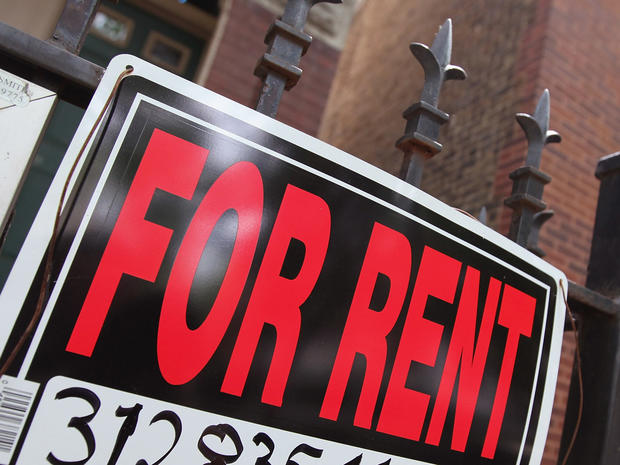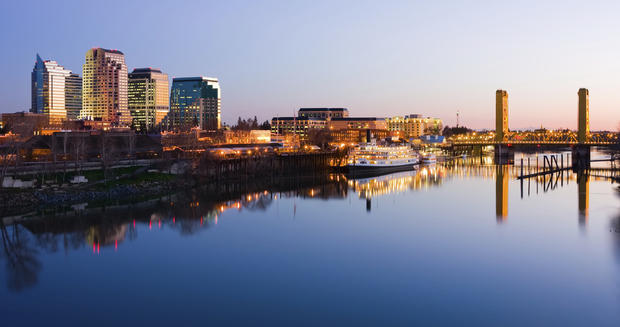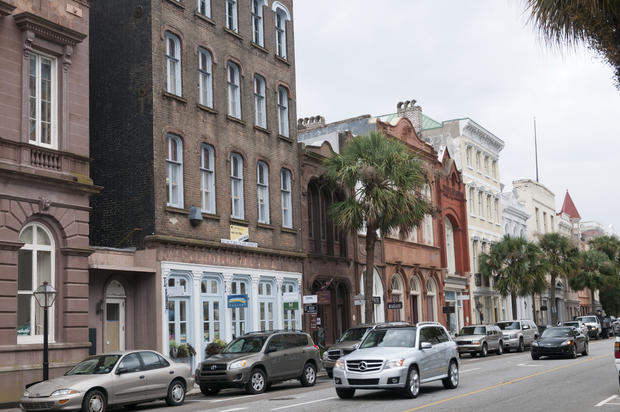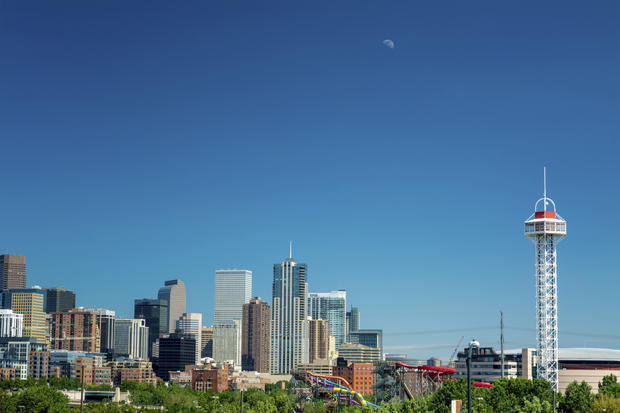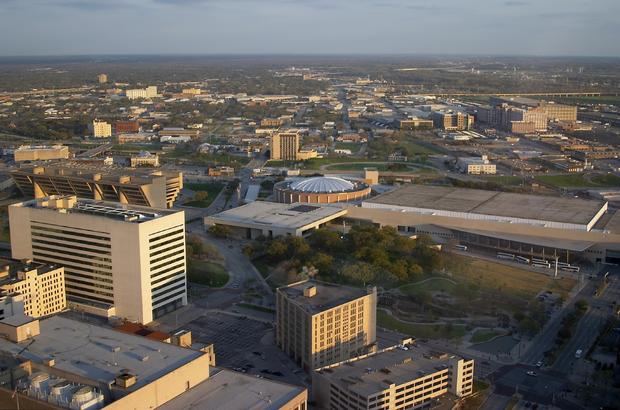9 U.S. cities with the biggest rent hikes
You don't have to be a new college grad looking for a place of your own to know that all across the U.S. rental rates are up to historic levels.
According to an August report by the real estate and rental website Zillow, rent costs accounted for more of a consumer's income than ever before in most major metro regions during the second quarter of 2015. It also described rents as "unaffordable" in three-quarters of the U.S. housing market.
And rental information website RentRange recently released information on the U.S. cities with the largest average rental rate increases for single-family homes.
That data shows cities in the South and West have had the greatest increases, with California and Florida having particularly strong rental markets. But the report found some surprises as well.
Here are the top nine rental markets in the U.S., based on RentRange calculations that looked at single-family home rental data from a variety of sources, including multiple listing services, property landlords and listing websites.
1. Cape Coral-Fort Myers, Florida
Third-quarter rent increase: 23.6%
The economic recovery is helping fuel a new population boom in Florida and in turn is putting new pressures on the inventory of single-family homes available for rent in the state's southwestern communities. According to the Fort Myers News-Press, rent on an average single-family home in the region is now around $1,540, or up nearly $300 from a year earlier.
"You're seeing this happening because there was a lot of inventory of homes bought by investors who bought to rehab and later sell," Randy Thibaut, owner of Fort Myers-based Land Solutions real estate brokerage, told the newspaper. "It was further compounded by REITs (real estate investment trusts) that bought portfolios of homes."
The newspaper also noted 28 percent of renters in the Cape Coral-Fort Myers area are "severely burdened" by their rental costs. And analysts say those high rents pose an obstacle to the region's economic development by discouraging companies that might otherwise consider the area.
"One thing recruiters want to know is 'Can our workers afford to live down there?'" Christopher Westley, director of the Regional Economic Research Institute and professor of economics at Florida Gulf Coast University, told the News-Press.
2. Sacramento-Arden-Arcade-Roseville, California
Third-quarter rent increase: 17.6%
People looking to rent homes in the metro area around California's capital are coming up against a strong job market and a drop in vacancies.
MPF Research reports the annual rental growth rate for Sacramento was up 9.9 percent for new residents, in the year ending in third-quarter 2015.
And Douglas Bendt, RentRange's senior manager for data science, said the combination of new jobs and scant available homes is creating a very tight rental market in the region.
"The only place you might see (vacancy rates) lower is San Jose, Silicon Valley, San Francisco, Manhattan and Boston," he told the Sacramento Business Journal.
3. North Port-Bradenton-Sarasota, Florida
Third-quarter rent increase: 17.2%
Located on the Gulf Coast, North Port-Sarasota-Bradenton is another Florida community benefiting from the state's post-recession boom. The average monthly cost for a rental home this region, according to a new regional report, comes in at slightly above $1,800, or a 16.2 percent year-over-year increase.
Vacancy rates in the area fell by nearly 1 percent from last year, to about 9.45 percent.
"Given the economic factors that contribute to the North Port-Sarasota-Bradenton housing market, we expect rental prices will continue to rise," John Michailidis, president and CEO of Real Property Management of Sarasota & Manatee, said in a press release.
And those rising rental costs are putting many lower-income households at financial risk.
"Families on the cusp end up paying the market rent, where it is available," William Russell, executive director of the Sarasota Housing Authority, told the Bradenton Herald this past May. "Sometimes that can be 50 to 60 percent of their income."
4. San Francisco-Oakland-Fremont, California
Third-quarter rent increase: 17%
The Bay Area has long been famous, or infamous, for its sky-high housing prices. The tech boom has brought money and more people to the region, creating a housing crunch of historic proportions and unprecedented prices for rental homes.
According to Zumper.com, San Francisco now has the highest rents in the nation. The median monthly cost for a one-bedroom apartment there came in at a whopping $3,500 in July.
The median rent price in Oakland, according to The New York Times, is up 20 percent compared to a year ago. It's gotten to the point where some people are renting out modified shipping containers in an Oakland warehouse for the relative bargain of $600 per month.
Evictions are also on the rise. The San Francisco Chronicle quotes figures from the city's Rent Board, which reported over 2,100 eviction notices from March of last year through February of 2015.
"Over the last five years, San Francisco has become the most unaffordable city in the United States," Erin McElroy, founder of the Anti-Eviction Mapping Project, told the newspaper.
5. Charleston-North Charleston, South Carolina
Third-quarter rent increase: 16.5%
A regional manufacturing boom, including announced plans by Mercedes Benz and Boeing to either build or expand existing plants in the Charleston-North Charleston area, has helped heat up the region's rental market to the point where affordable homes are scarce.
"More than 50 percent of the households in the region spend about 50 percent of their income on housing," Michelle Mapp, executive director of the South Carolina Community Loan Fund, told the Post and Courier earlier this year.
6. Los Angeles-Long Beach-Santa Ana, California
Third-quarter rent increase: 16.3%
California has the second-lowest homeownership rate in the nation. And in Los Angeles County alone, according to Census figures, renters occupied nearly 55 percent of all housing last year.
"The rental market in Southern California is the least-affordable it's ever been," Richard Green, Director of the USC Lusk Center for Real Estate, recently told Southern California Public Radio.
"We have had essentially no new supply of apartments until quite recently," said Green, "so vacancy rates are very low, and that gives landlords a lot of pricing power so they can push rents. And they have to the point where they're beyond record levels."
7. San Jose-Sunnyvale-Santa Clara, California
Third-quarter rent increase: 16.1%
The continued strength of Silicon Valley's booming tech economy means housing, especially affordable rental housing, is quite scarce in the region.
"With vacancy rates at about half the national average, the demand for housing has sent rents through the roof, creating a sense of desperation for many who are being priced out," said a recent report in the San Jose Mercury News.
The newspaper also noted that some area landlords will ask potential tenants to prove their income is triple the requested rent. That means a $3,400 per month rental requires a minimum annual income of $122,400.
8. Denver-Aurora, Colorado
Third-quarter rent increase: 14.6%
The metro Denver housing market is currently one of the nation's hottest, and much of that demand is fueled by Colorado's rapidly growing legal marijuana industry.
But the so-called "green rush" is creating an affordable housing crisis in the Mile-High City, where the region's median annual income for a four-person household is just $62,250.
Last year, the Denver Post quoted figures by Zillow saying to afford a median-priced rental in metro Denver, a renter would need to make $35 per hour. That's nearly 4.5 times Colorado's minimum wage and $10,000 more annually than the four-person household median income.
9. Dallas-Fort Worth-Arlington, Texas
Third-quarter rent increase: 14%
Oil prices may be down on global markets, but the energy sector is still strong in North Texas. The region also has growing medical, financial and technology businesses, which bring even more job-hunters into the region.
Last month the Dallas Morning News, quoting a report by MPF Research, noted that apartment costs in the region were up nearly 7 percent during the third quarter of this year, compared to the same time period in 2014. That's close to three times the average long-term increase rate.
At the same time, and despite a boom in housing construction, the Dallas-Fort Worth-Arlington region has a rental unit vacancy of less than 5 percent.
